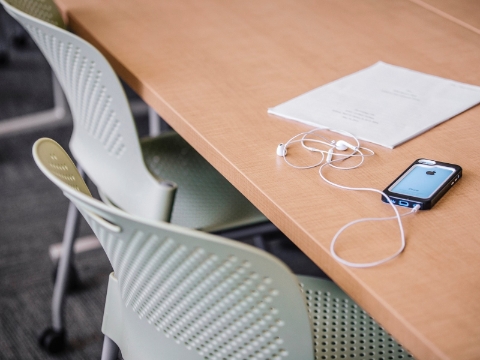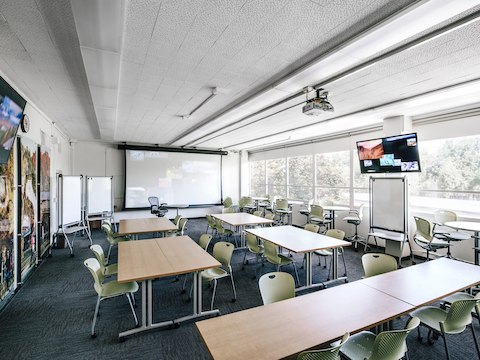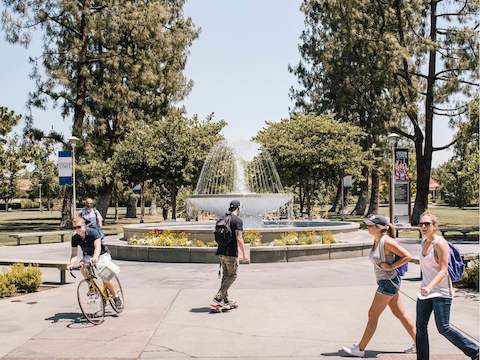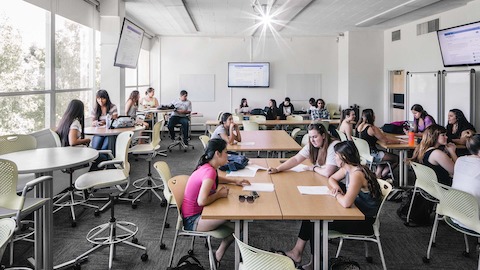California State University, Fresno
Flexible Learning Studio encourages everyone to interact and collaborate
Fresno, California, US
Download PDF (574 KB)
Recently, California State University in Fresno partnered with Herman Miller to design a Learning Studio in the school’s Family and Food Science building. The university saw Herman Miller's Learning Spaces Research Program as an opportunity to test a more flexible, collaborative classroom layout using a human-centered, research-based approach. “I liked the Herman Miller program because it uses actual research on students’ perceptions of learning spaces,” says Rudy Sanchez, Director of Academic Technology and Innovation.

Mobile chairs and tables allow the kind of movement and interaction that traditional classroom design can't match.

The new, dynamic environment provides plenty of options for students and instructors to meet, mingle, and get things done together.
During the project, the team had to solve a number of design challenges, including the university’s request that the small space accommodate up to 60 students. To achieve this, the team minimized the footprint of the teaching station, giving professors and students more space to move about and work together. They added mobile chairs and tables to allow groups to rearrange furnishings as their needs change, and café-height seating lines the perimeter. Students and faculty now have a choice of furnishings to suit a variety of learning styles. A large, centrally located monitor has been replaced with four monitors, all thoughtfully placed for optimal viewing by everyone in the Learning Studio.

Officially designated an arboretum in 1979, the California State University, Fresno campus is a fertile environment for both learning and the 4,000-plus trees that flourish there.
Direct feedback from students and faculty indicates that they are thriving in the new environment. “I think we all know that space is important on some level,” says Sanchez, “but this project really reinforced for me, for others across campus involved in the project, and students and faculty using the space just how powerful the learning environment is.” The university plans to use insights gained from the Learning Studio to develop more student- and faculty-centered learning spaces.
